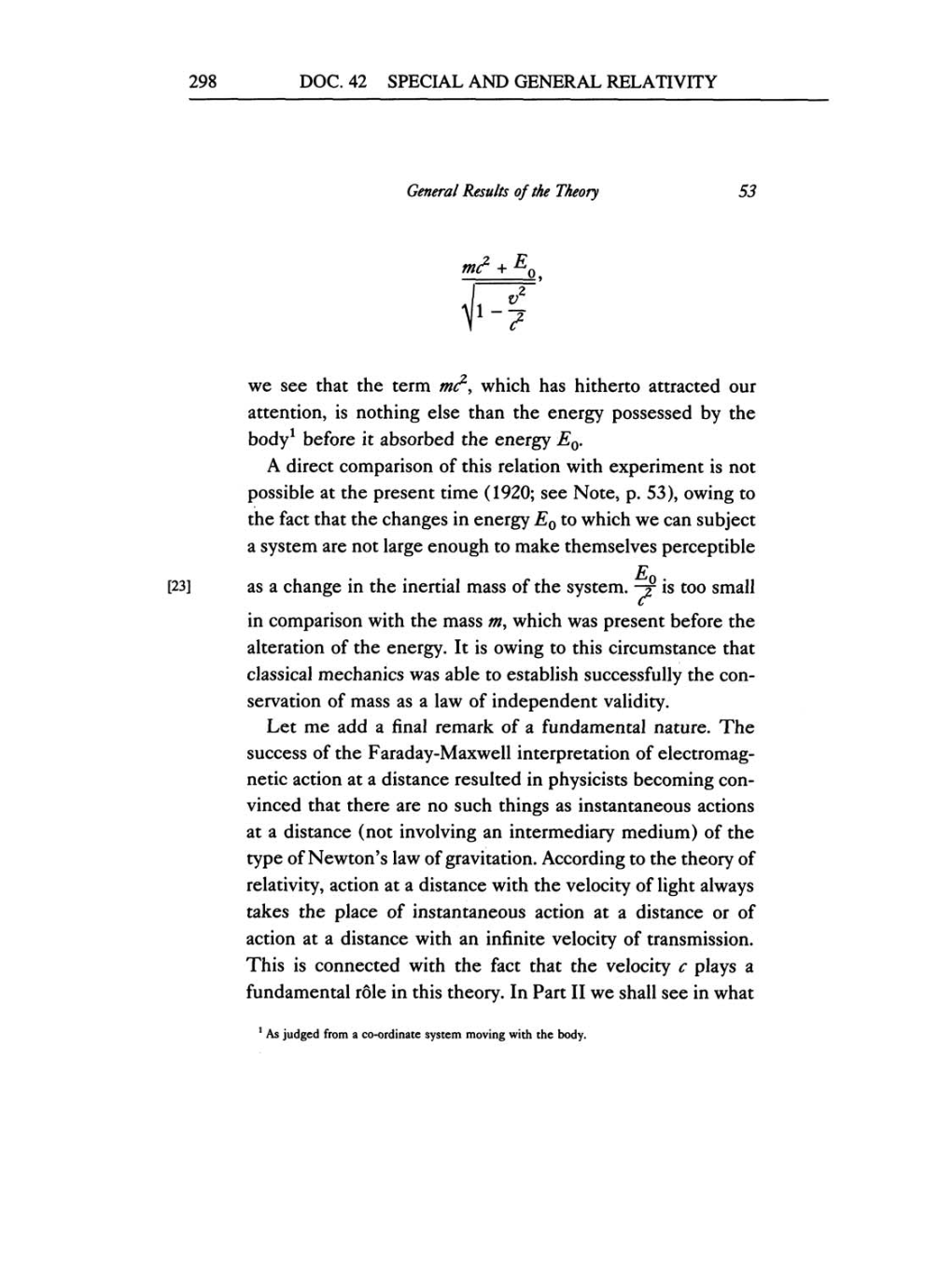298 DOC.
42
SPECIAL AND GENERAL RELATIVITY
General
Results
of the
Theory
53
1
V2
c2
m
we see
that the
term
mc2,
which
has
hitherto attracted
our
attention, is nothing
else than the
energy possessed by
the
body1
before it absorbed the
energy
E0.
A direct
comparison
of this relation with
experiment
is
not
possible
at
the
present
time
(1920;
see
Note,
p.
53), owing to
the fact that the
changes
in
energy E0 to
which
we can
subject
a
system
are
not large enough to
make themselves
perceptible
[23]
as a
change
in
the
inertial
mass
of
the
system.
E0/c2
is
too
small
in
comparison
with the
mass
m,
which
was present
before the
alteration
of
the
energy.
It
is
owing to
this circumstance that
classical
mechanics
was
able
to
establish
successfully
the
con-
servation of
mass as
a
law
of
independent
validity.
Let
me
add
a
final
remark of
a
fundamental
nature.
The
success
of the
Faraday-Maxwell interpretation
of
electromag-
netic action
at
a
distance resulted
in
physicists becoming
con-
vinced that there
are
no
such
things
as
instantaneous actions
at
a
distance
(not
involving
an
intermediary medium)
of
the
type
of Newton's
law
of
gravitation.
According to
the
theory
of
relativity,
action
at
a
distance with the
velocity
of
light
always
takes the
place
of instantaneous action
at
a
distance
or
of
action
at
a
distance with
an
infinite
velocity
of
transmission.
This
is
connected with
the
fact that the
velocity
c
plays
a
fundamental
röle
in this
theory.
In Part II
we
shall
see
in what
1
As
judged
from
a
co-ordinate
system moving
with the
body.
